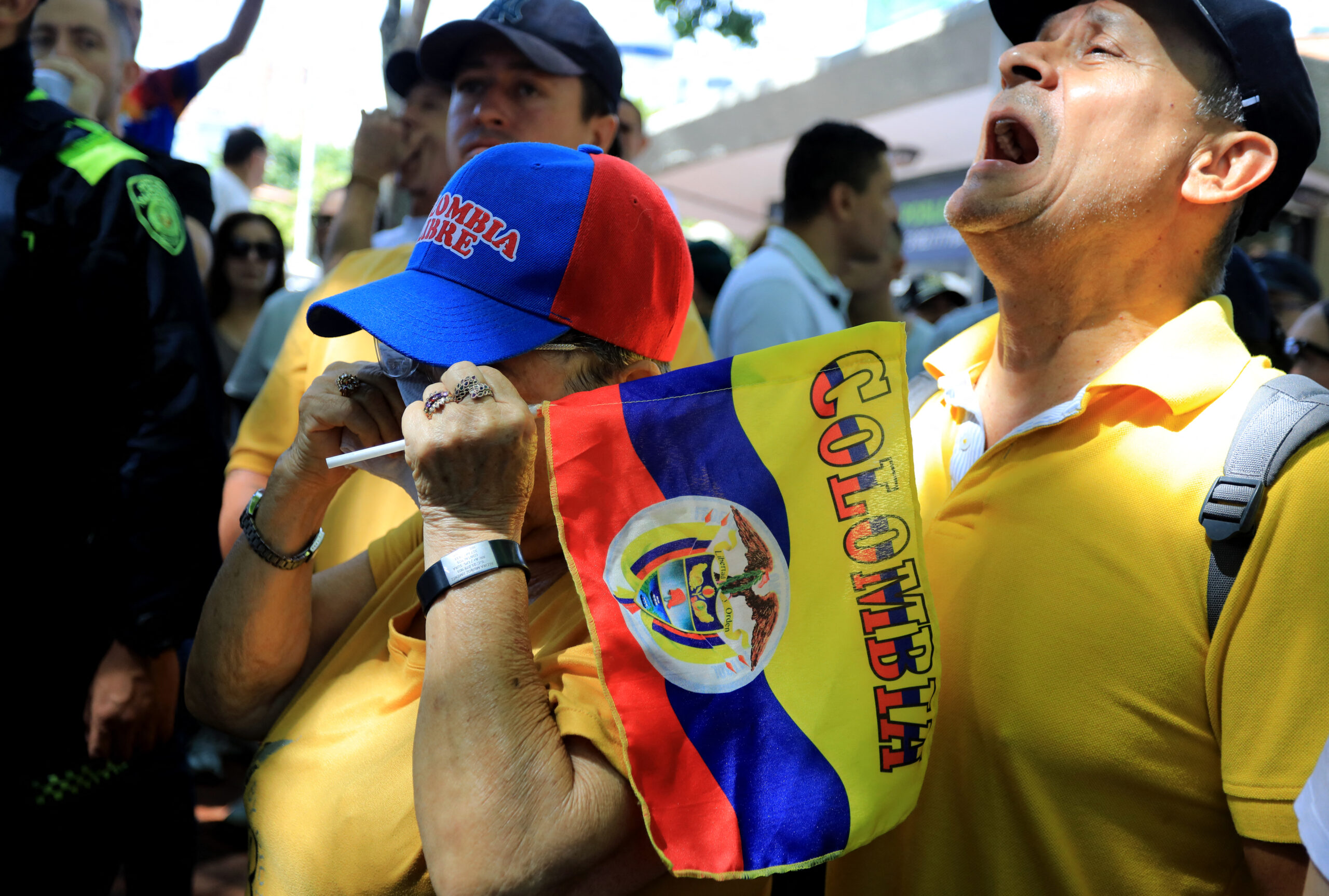Colombia Comes Apart
The assassination attempt on Miguel Uribe Turbay is symptomatic of the region’s larger problems.

Colombia, in the full swing of a turbulent presidential campaign season, was shaken this past week when Senator Miguel Uribe Turbay, a prominent right-wing politician and candidate for president, was shot in the head on Saturday. Uribe was out campaigning in the capital city of Bogotá when a gunman opened fire from the crowd, hitting him twice in the head and once in the leg. Videos of the chaos following the shooting quickly went viral on social media: the senator’s supporters desperately pressing shirts to the side of his head in an attempt to stem the bleeding, the gore smearing the hood of a nearby car.
Amazingly, Uribe was not immediately killed, and was rushed to surgery at a nearby hospital in Bogotá. He remains, at time of writing, in critical condition, hovering between life and death.
The would-be assassin, captured at the scene after a brief shoot-out with pursuing law enforcement, was a young hired killer just 14 years old—not an uncommon sight in Latin America, where cartels and other criminal organizations often employ such sicarios as cheap and disposable agents. The shooter was the least important member of a significant conspiracy that planned and executed the assassination attempt against Uribe; police have identified no fewer than five other participants who surveilled the location and helped plan the attack, and even provided the weapon used to shoot Uribe.
Attempts to identify and locate the rest of the conspirators, as well as their contacts or superiors, have thus far been (at least from what has been released to the public) to no avail, so the exact motive for the shooting remains unknown. However, it would be far from surprising if it is eventually discovered to be an operation conducted by one of the cartels or revolutionary movements Colombia hosts in abundance.
One such group of militants followed up the assassination attempt with a wave of 19 terror attacks on Tuesday, bombing cars and shooting at civilians across the southwestern region of the country. The attacks killed 7 people and injured over 50 more, making it one of the larger attacks by organized crime in recent history and leaving Colombians wondering if the troubled times of civil unrest of decades past are beginning to return.
While Colombia had managed to tame the worst excesses of organized crime within its borders—steadily lowering the murder rate from over 80 per 100,000 in the 1990s to about 25 per 100,000 in 2024—in recent years progress on crime and internal security in the region has slowed and begun to reverse.
Colombia’s current president, Gustavo Petro, came to power on the platform of “Total Peace,” his name for a government program of open negotiation with all of Colombia’s revolutionary groups. Petro himself is a former guerrillero, having fought for the M-19 revolutionary movement in his youth until it signed a demilitarization agreement with the government, and is a strong proponent of convincing revolutionaries and guerrilleros to lay down their arms and rejoin civil society.
This is not necessarily an absurd proposal; Colombia did secure some relief from its internal conflicts after president Juan Manuel Santos signed a peace agreement with the Colombian Revolutionary Armed Forces (FARC). But that relief has proven limited indeed—many militants simply refused to demobilize, shattering the old organization into a multitude of independent fragments fighting over the territory and drug markets.
Humiliatingly for Petro, few guerrilleros in the country apparently share his enthusiasm for peace. His open negotiating table has been a complete failure; not even one militant group has signed a demilitarization agreement with the government. Instead, they have begun to ramp up their violent activities: In January, the largest guerilla movement in the country, the National Liberation Army (ELN) broke the ceasefire it had negotiated with the government and began a war with other cartels and revolutionary groups over lucrative coca-producing land in the Colombian wilderness.
Subscribe Today
Get daily emails in your inbox
Nor is Colombia the only country in the region that is seeing a surge of violent, organized crime. Its southern neighbor, Ecuador, has been embroiled in devastating gang violence for several years now, with its murder rate nearly sextupling between 2020 and 2023. Indeed, Ecuador may even have served as inspiration for the attempt on Uribe’s life: during the 2023 presidential election, Ecuadorian right-wing presidential candidate Fernando Villavicencio was assassinated after a gunman shot him in the head after a campaign rally.
Uribe, like Villavicencio in Ecuador, favored a confrontation with cartels and other forms of organized crime as opposed to the conciliation or negotiation Petro has based his security strategy on. Uribe has personal experience with the devastating consequences of Colombia’s narcoterrorists: His mother, a well-known journalist, was kidnapped and murdered by militants when he was just 5 years old.
Since Villavicencio’s death, Ecuador has attempted to crack down on the gangs under President Daniel Noboa to little avail. The country is still awash in crime and chaos, leaving it with the second-highest murder rate in the world. Many of those gangs are directly linked to Colombian cartels and narcoterrorists. Some of that chaos may now be bleeding back up into Colombia itself. If the country does not take serious measures to cripple the cartels, it may soon find itself in a familiar and unpleasant situation.